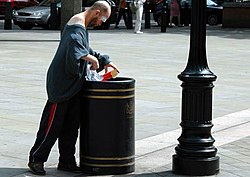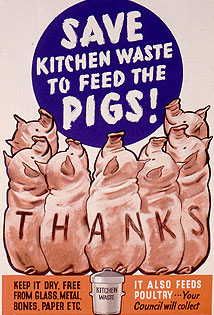It is estimated that 290 million tonnes of waste was produced in the United Kingdom in 2008 but volumes are declining. [1] In 2012 municipal solid waste generation was almost 30 million tonnes, according to Waste Atlas Platform. [2]
Contents
- Food waste
- Other types of waste
- Household waste
- Commercial waste
- Fly tipping
- Hazardous waste
- Landfills
- Waste to energy
- Waste by country
- England
- Scotland
- Notable waste issues
- See also
- References
- External links
The National Waste Strategy is a policy of the government, and in particular the Department for Environment, Food and Rural Affairs (Defra), intended to foster a move to sustainability in waste management within. [3]





